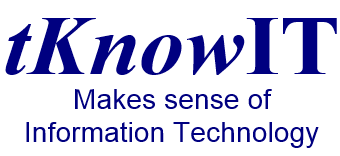The Iconia Tab W500 is a Microsoft Windows 7 based Tablet from Acer. There are not that many tablets running windows 7 and many reviewers say that windows 7 isn’t designed for, or doesn’t work on, a tablet. I’ve had the Acer W500 for a couple of months now and would have to say I disagree. It’s not perfect but it works and works well.
 It is heavier than many of the android based tablets but has a ‘well-built and solid’ feel to it. Unlike many NetBooks it uses an AMD processor rather than the Intel Atom and, when combined with the SSD device and 2GB RAM, provides a decent boot up time. Once running the SSD also means it can be put into sleep mode and resume almost instantly.
It is heavier than many of the android based tablets but has a ‘well-built and solid’ feel to it. Unlike many NetBooks it uses an AMD processor rather than the Intel Atom and, when combined with the SSD device and 2GB RAM, provides a decent boot up time. Once running the SSD also means it can be put into sleep mode and resume almost instantly.
It’s ideal for surfing the internet and reading emails and a touch of light ‘office work’.
One of the advantages over Android tablets is that if a program will run on your windows PC or laptop then it is likely to run on the W500. Like other windows 7 devices it is also unlikely to crash – which is something Android users are having to put up with for now.
The down side of a windows device is that you may have to buy programs, such as MS Office, to give you more features and install some form of internet security software. The latter will impact on speed but no doubt when the same products mature for android and apple then they will also ‘become slower and safer’
The 1280×800 screen is bright and clear, the sound is loud and clear for music, skype, etc and the W500 also comes with a full-sized USB port, SD Card slot and HDMI port. Like most tablets it has front and rear facing cameras. There is an optional docking keyboard system but I found the onscreen keyboard reasonably easy to use although it was easier still with an optional stylus/pen.
Running windows makes the device more expensive than an Android device and it’s not quite as slick at starting apps as they are but once started they tend not to crash. It makes the NetBook redundant and runs all my windows programs – new and old – so I can confidently carry it around instead of a more expensive laptop.
Acer also do an Android based system called the Iconia Tab A500, which could be confusing but it resembles other Android based tablets which tend to be slimmer and more lightweight.
For those of you looking for a tablet that has a familiar operating system and will run those windows programs you can’t be without then I’d say it’s worth a look.





You must be logged in to post a comment.